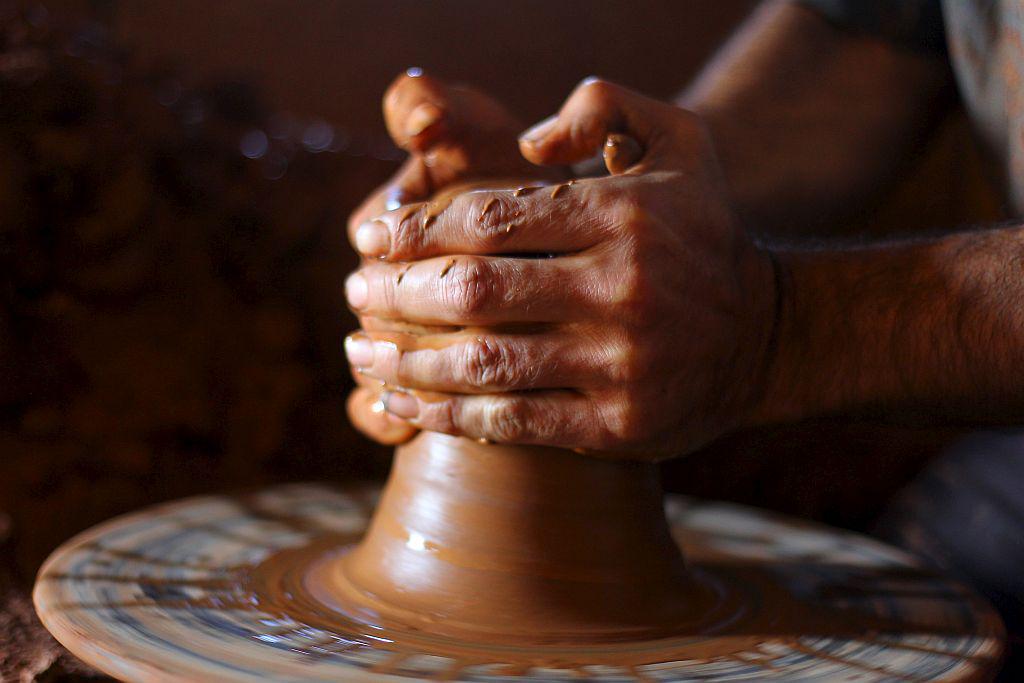
In a nation defined by its mountains, the region of Prekmurje is known instead for its lowlands and gently rolling hills. Over the centuries, its characteristic red clay soil gave rise to a traditional craft that provided a livelihood for generations of local families.
For much of recent history, Prekmurje was famous for its pottery, which was produced in homes throughout the region. The local style – known as black pottery – was known for having only simple decorations and no glazing. Instead, it was characterized by an abundance of different designs for household use – baking trays, pots, plates, pans, and narrow-necked jugs known as pütre. The designs varied from village to village; the pottery of the Goričko hill country, for instance, was different from that of the Panonnian lowlands. Many potters had their own small workshops, while the clay was baked in outdoor pottery kilns. Women played an important role in the process; they frequently prepared the clay and then made sure that the fire kept burning.
The pottery eventually became a recognizable symbol of Prekmurje. When the famed Slovenian architect Joze Plečnik was asked to design a new church near the village of Bogojina, he used traditional pots to decorate the church ceiling. Visitors still flock to the church to marvel at his ingenious architectural nod to the local heritage.
Ultimately, the advent of industrialization and changing lifestyles all but doomed the ancient tradition. As cheaper pottery flooded he market, most potters in Prekmurje abandoned their craft. A few survived by catering to tourists, and Filovci, long known as a pottery village, became a mainstay of tour groups.
With the resurgence of interest in traditional, hand-crafted objects, Prekmurje pottery is again gaining a higher profile. While it remains more expensive than its industrial equivalents, it is increasingly sought-after by people, Slovenians and visitors alike, who appreciate the history of traditional Slovenian crafts – a history that spans many centuries.

































































